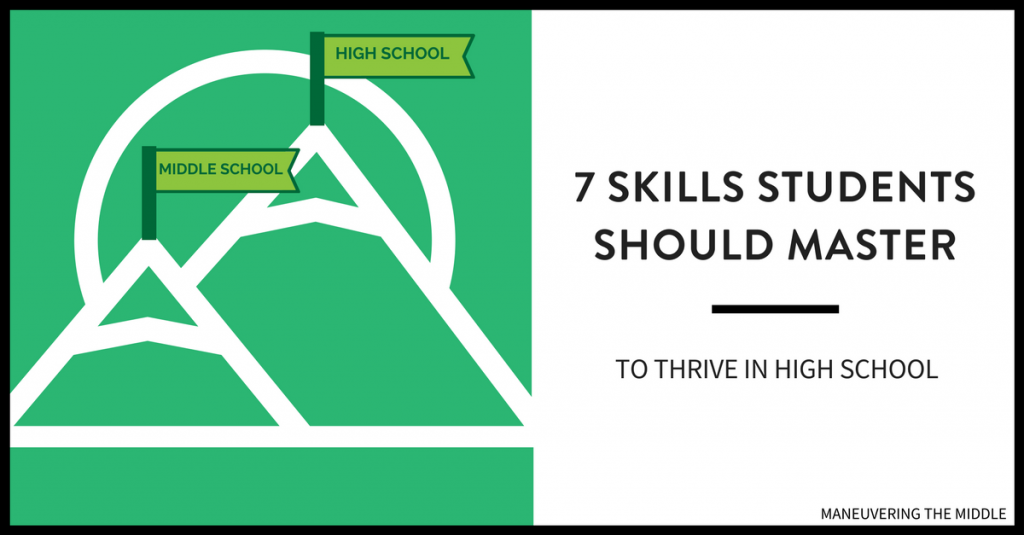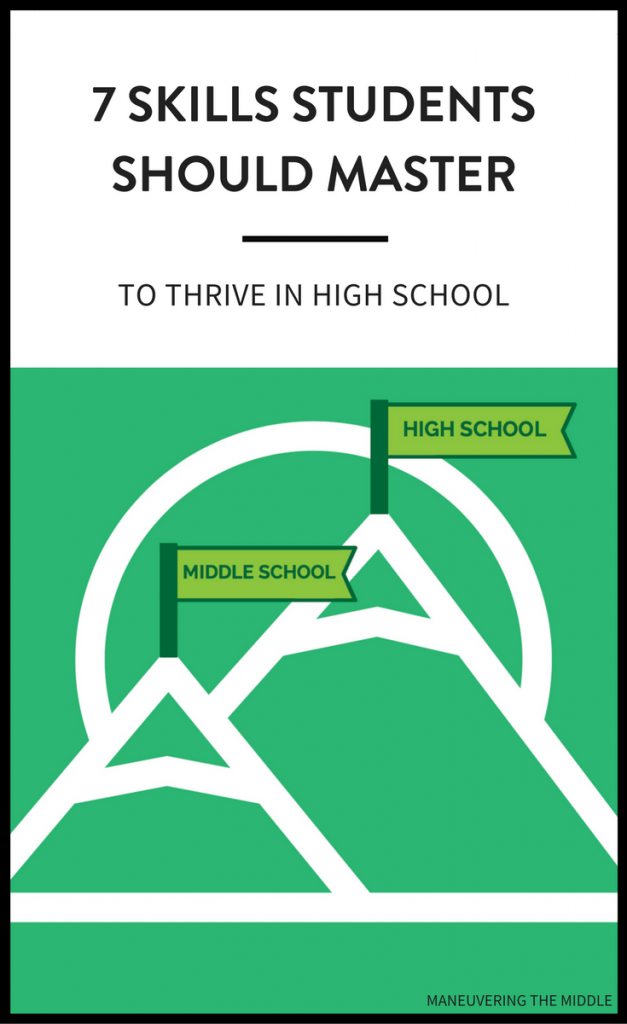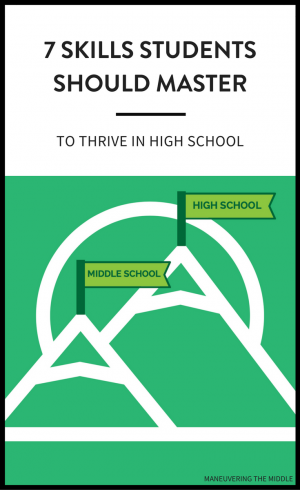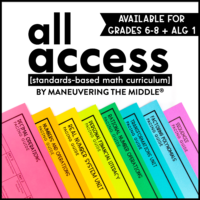Though I currently teach 6th grade math, I am well versed in high school math. I taught both Algebra 1 to freshman and Algebra 2 to sophomores a couple of years ago. Time and time again, I found myself reteaching math concepts students should have been proficient in before entering high school. The middle school transition to high school is going to be hard, but it shouldn’t be because of math.
I’ve compiled a list of middle school math skills students master master to thrive in high school.

7 Middle School Math Skills Students MUST Master
In addition to that, I taught ACT preparation as part of Algebra 2, and I found many of the problems I encountered to be skills that students learned in middle school but more rigorous. In fact, I looked at three ACT practice tests and found that around 40% of problems are covered or introduced in grades 6, 7, and 8.
- Order of Operations – introduced in Grade 5. Any substitution problem most likely will involve order of operations. The quadratic formula is one giant order of operations problem.
- Proportions – introduced in Grade 6. Considering that many linear equations represent proportions, proportions are foundational for high school algebra.
- Integer Operations – This is introduced in 6th grade, but students still struggle up through high school. Though access to a calculator should help with this skill, I would still see students distribute a negative number incorrectly.
- Solving Equations – introduced in the elementary grades. If students have a firm grasp on how to isolate the variable using inverse operations, then they will be more successful when the variable is on both sides or when they are solving systems of equations.
- Measures of Central Tendency and Variability – introduced in Grade 6. Mean, median, mode, and range will follow students from Grade 6 to the ACT. On the practice ACT I took, I saw at least two questions regarding this skill. Armed with a calculator, there is nothing challenging about this skill — except remembering what each word means.
- Percents – introduced in Grade 6. The mistake I saw most often when solving problems involving percents was that students struggled to move the decimal the correct direction the correct number of times. Though I don’t think percents are explicitly expounded on more in high school, it is one of the most applicable real-world skills.
- Substitution – introduced in Grade 6. Substitution is foundational for success not only in high school math but in high school science as well. Students who can substitute values can be highly successful checking their work in Algebra and using formulas in Geometry.
High school teachers, what skills would you add to this list? If we can ensure that students are stronger with these math concepts, then we can feel relief knowing that we have made the middle school transition to high school easier for our students.






I teach 6th grade math, where most of the concepts are introduced. The challenge is that we also have to go back and reteach a lot of concepts from elementary school. The students who have a firm foundation on computation skills and basic facts are the ones able to firmly grasp these middle school concepts needed for high school. Too many kids are taught “strategies” for how to get around not knowing basic skills, that they don’t develop the number sense necessary for the more abstract concepts in which they need to APPLY the computation skills as PART of another process. They spend so much time fuddling through the computation that they miss the bigger picture of the new concept they are trying to acquire. We need to stop pushing kids through who aren’t ready.
I teach 6th grade math too! When it comes to acquiring new skills that involves a lot of computation, I will give certain students calculators. You can read more in this post.
i agree about not pushing kids through the class to a higher level. i ma 52yrs old kids ar grown now so i want to go to college. I am studying for the Accuplacer , i am registered for pre college math because i did not get it before. i will learn it this time!!
For #2 While all directly proportional relationships are linear, not all linear relationships are proportional. y = x + 2 is not proportional. There is a constant rate of change, but the ratio of x to y does not stay constant.
Range is not a measure of central tendency, it is a measure of variability.
Thanks for catching those errors!
MIddle schooler here! I’m failing math and was looking for some things to study to help me out. This helped me get a place to start, thanks!
And what about fractions?
Most of students got in trouble when they’re asked to solve any computation involving fractions…
There is not much geometry in the list. I see that you have taught Algebra in high school, but from middle school’s point of view also geometry should be covered.